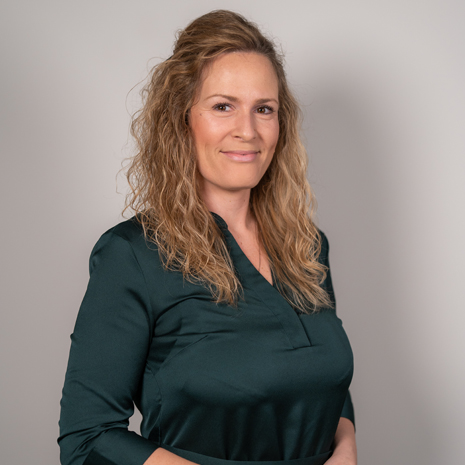Programme
The programme offers both curricular and extracurricular activities.
The programme includes interactive lectures and workshops that cover the following topics:
- Data Science Methodology (Full Professor Ivan Luković, PhD)
- Visual Analytics in SAS environment (Associate Professor Marina Ignjatović, PhD, Associate Professor Ana Poledica, PhD, Stefan Krstović, MSc, Alina Luchian, SAS, Rosanda Milatović-Skorić, SAS Regional Manager, and Siniša Arsić, Telekom Srbija)
- Business Analytics (Full Professor Gordana Savić, PhD)
- Modelling (guest lecturer)
- System Modelling (Associate Professor Ivana Dragović, PhD)
- Sales and Finance (Full Professor Vesna Damnjanović, PhD, Associate Professor Miloš Milosavljević, PhD)
- Advanced Excel for Sales (Associate Professor Lena Đorđević Milutinović, PhD)
- Business Models and Design (Assistant Professor Jovan Krivokapić, PhD)
Activities are organized Monday through Friday 9:00 to 16:30 with two short coffee breaks and a lunch break. On the final day, students will present their solutions.
Please note that the timetable can be subject to change at any time until the programme confirmation.
The extracurricular activities offered by the programme are the city tour and excursion. These activities give students a good chance to create new friendships, explore Belgrade, and find out more about its cultural heritage. All extracurricular activities are optional.
Upon completion, the participants will be able to evaluate the programme.
Schedule
Welcome reception
Introducing and presenting the summer school programme, and presenting the home countries and schools of the participants.
Change the world through data
Imagine a future where we can completely remove the IT/Hardware/platform “problem”! And just focus on what you are hired to do! Transforming structured and unstructured data into analytical insights. Build and test models in your preferred programming language, whether that’s SAS, Python or R. Having JupyterHub installed out-of-the-box for immediate access to Jupyter notebooks. Finally, Deploy models to the destination of your choice – no recoding necessary – and monitor performance over time. Automate model life cycle phases by using an embedded CI/CD approach. Responsible AI Elements like data privacy, model interpretability and fairness monitoring, along with automatic explanations of data and models written in business language, designed from the start... Imagine all that ready and available within the hour, so you can do what YOU do best… Truly advanced analytics.
Data Science Methodology Approaches
To develop and deploy any, and particularly complex engineering system successfully, a systematic application of the appropriate methodology is crucial. Organizational systems, in which various data analytics models and software services are deployed intensively, are not the exceptions. A goal of this lecture is to raise the level of students’ recognition of the importance and applicability of various data science methodology approaches.
In this lecture, we outline the fundamental notions and a role of information engineering, business intelligence, data science, data analytics, data mining, and data science projects. Then, we give an overview of existing data science methodology frameworks, i.e. process models, and discuss the analogies with software process models based on the life-cycle philosophy. Finally, we give an overview of The CRoss Industry Standard Process for Data Mining (CRISP-DM) process model and discuss the role of all its six phases, with a particular attention to the practice of Business Understanding, Data Understanding, and Data Preparation phases, as they are of a crucial importance to identify the context and setup the scope, goals, and expected values of each data science project.
After the lecture, the students will be able to understand the common terminology, and clearly recognize the importance of a selection, preparation, and application of a proper data science methodology framework in data science projects of diverse sizes and natures. They will be able to understand all the data science methodology steps and recognize CRISP-DM as a common methodology framework with initial ideas how it can be applied in data science practice. The students will become ready for additional study work, including self-study efforts, to learn how to actively apply business understanding, data understanding, and data preparation phases in their data science practice.
Coffee break
A new approach of Data Science: Closing the gap between academia and industry
In 2023, The World Economic Forum ranked data scientist as the third most desired job in the U. S. and in Europe with more than 45,500 openings. By 2028, the 11.6 millions new data scientists and data analysts jobs will be required in all the industries, in Europe and in the US alone, according to WEF data. At SAS, we work closely with over 3,000 universities around the world and industry players to close this gap and respond to the economic and workforce challenges. SAS Skills are the one of the most wanted in the area of Data Science, therefore, the Summer School is a great opportunity to immerse yourself in the world of data analytics.
Workshop: SAS Visual Analytics 1 for SAS Viya: Basics
Visual Analytics 1 for SAS Viya: Basics course will introduce students to SAS Visual Analytics – a powerful tool designed to help companies transform data into interactive reports and dashboards and gain actionable insights. SAS Visual Analytics empowers organizations to explore huge volumes of data very quickly to identify patterns, trends, and opportunities for further analysis. It is very intuitive and easy to explore, and students will have opportunity to attend hands-on workshops with FON lecturers and SAS experts.
Students will understand the basics of the SAS Visual Analytics methodology and learn how to systematically approach data, from data preparation, data discovery, analytics to report creation. The course at FON summer school will cover content materials (slides, demo, and practice, review) from SAS Visual Analytics 1 for SAS Viya: Basics.
The course is divided into 4 workshops:
Workshop 1 - Getting started with SAS Visual Analytics, Workshop 2 - Preparing data using SAS Data Studio, Workshop 3 - Analyzing data using SAS Visual Analytics and Workshop 4 - Designing reports with SAS Visual Analytics.
Workshop 1: Getting started with SAS Visual Analytics will cover the following topics:
- Introduction to SAS Visual Analytics
- Exploring the Visual Analytics course environment
- Viewing Visual Analytics reports
- Organize content in SAS Drive.
- View and interact with reports using SAS Visual Analytics.
- SAS Certified Specialist: Visual Business Analytics Using SAS Viya
Lunch
Workshop: SAS Visual Analytics 1 for SAS Viya: Basics
Workshop 2: Preparing data using SAS Data Studio SAS Visual Analytics empowers organizations to explore huge volumes of data very quickly to identify patterns, trends, and opportunities for further analysis. Students will understand the basics of the SAS Visual Analytics methodology and learn how to systematically approach data, from data preparation, data discovery, analytics to report creation. The course at FON summer school will cover content materials (slides, demo, and practice, review) from SAS Visual Analytics 1 for SAS Viya: Basics. Workshop 2 - Preparing data using SAS Data Studio will cover the following topics:
- Investigating data in Visual Analytics
- Transforming data using SAS Data Studio
- Access and investigate data in SAS Visual Analytics.
- Prepare data using SAS Data Studio.
- SAS Certified Specialist: Visual Business Analytics Using SAS Viya
Coffee break
Workshop: SAS Visual Analytics 1 for SAS Viya: Basics
Workshop 2: Preparing data using SAS Data Studio SAS Visual Analytics empowers organizations to explore huge volumes of data very quickly to identify patterns, trends, and opportunities for further analysis. Students will understand the basics of the SAS Visual Analytics methodology and learn how to systematically approach data, from data preparation, data discovery, analytics to report creation. The course at FON summer school will cover content materials (slides, demo, and practice, review) from SAS Visual Analytics 1 for SAS Viya: Basics. Workshop 2 - Preparing data using SAS Data Studio will cover the following topics:
- Investigating data in Visual Analytics
- Transforming data using SAS Data Studio
- Access and investigate data in SAS Visual Analytics.
- Prepare data using SAS Data Studio.
- SAS Certified Specialist: Visual Business Analytics Using SAS Viya
Belgrade guided tour
Workshop: SAS Visual Analytics 1 for SAS Viya: Basics
Workshop 3: Analyzing data using SAS Visual Analytics SAS Visual Analytics empowers organizations to explore huge volumes of data very quickly to identify patterns, trends, and opportunities for further analysis. Students will understand the basics of the SAS Visual Analytics methodology and learn how to systematically approach data, from data preparation, data discovery, analytics to report creation. The course at FON summer school will cover content materials (slides, demo, and practice, review) from SAS Visual Analytics 1 for SAS Viya: Basics. Workshop 3 - Analyzing data using SAS Visual Analytics will cover the following topics:
- Working with data Items
- Exploring data with charts and graphs
- Creating data items and applying filters
- Performing data analysis
- Perform data discovery and analysis using SAS Visual Analytics.
- SAS Certified Specialist: Visual Business Analytics Using SAS Viya
Coffee break
Workshop: SAS Visual Analytics 1 for SAS Viya: Basics
Lecturer: SAS expert Workshop 3: Analyzing data using SAS Visual Analytics SAS Visual Analytics empowers organizations to explore huge volumes of data very quickly to identify patterns, trends, and opportunities for further analysis. Students will understand the basics of the SAS Visual Analytics methodology and learn how to systematically approach data, from data preparation, data discovery, analytics to report creation. The course at FON summer school will cover content materials (slides, demo, and practice, review) from SAS Visual Analytics 1 for SAS Viya: Basics. Workshop 3 - Analyzing data using SAS Visual Analytics will cover the following topics:
- Working with data Items
- Exploring data with charts and graphs
- Creating data items and applying filters
- Performing data analysis
- Perform data discovery and analysis using SAS Visual Analytics.
- SAS Certified Specialist: Visual Business Analytics Using SAS Viya
Workshop: SAS Visual Analytics 1 for SAS Viya: Basics
Workshop 4: Designing reports with SAS Visual Analytics SAS Visual Analytics empowers organizations to explore huge volumes of data very quickly to identify patterns, trends, and opportunities for further analysis. Students will understand the basics of the SAS Visual Analytics methodology and learn how to systematically approach data, from data preparation, data discovery, analytics to report creation. The course at FON summer school will cover content materials (slides, demo, and practice, review) from SAS Visual Analytics 1 for SAS Viya: Basics. Workshop 4 - Designing reports with SAS Visual Analytics will cover the following topics:
- Creating a simple report
- Creating interactive reports
- Working with display rules
- Create interactive reports using SAS Visual Analytics.
- SAS Certified Specialist: Visual Business Analytics Using SAS Viya
Lunch
Workshop: SAS Visual Analytics 1 for SAS Viya: Basics
Workshop 4: Designing reports with SAS Visual Analytics SAS Visual Analytics empowers organizations to explore huge volumes of data very quickly to identify patterns, trends, and opportunities for further analysis. Students will understand the basics of the SAS Visual Analytics methodology and learn how to systematically approach data, from data preparation, data discovery, analytics to report creation. The course at FON summer school will cover content materials (slides, demo, and practice, review) from SAS Visual Analytics 1 for SAS Viya: Basics. Workshop 4 - Designing reports with SAS Visual Analytics will cover the following topics:
- Creating a simple report
- Creating interactive reports
- Working with display rules
- Create interactive reports using SAS Visual Analytics.
- SAS Certified Specialist: Visual Business Analytics Using SAS Viya
Coffee break
Workshop: SAS Visual Analytics 1 for SAS Viya: Basics
A short presentation covering implementation of machine learning use case with potential practical use in Telekom Serbia Network planning department. The project was based on telco data for mobile internet segment of customers, and it included development of a network traffic forecasting algorithm, with the goal of solving network capacity problems. Main focus of development efforts has been placed on 4G radio access network, by analyzing 18 different parameters. The project was submitted to SAS Hackathon global competition for year 2022.
Business analytics for better decisions
Business analytics is a powerful tool that can be used to make better decisions and craft business strategies. Today’s organizations generate and gather vast amounts of data that need to be interpreted and analyzed in order to generate valuable information. Business analytics is the process of using quantitative methods to derive meaning from data to make informed business decisions. Core business analysis techniques are descriptive, diagnostic, predictive and prescriptive analytics. Descriptive analytics is focused on the interpretation of historical data to identify trends and patterns using business intelligence tools, data visualization and dashboards. Diagnostic analytics is focused on the interpretation of historical data to determine why something has happened using drill-down and data mining techniques. Predictive analytics uses statistics and quantitative methods to forecast future outcomes. It relies primarily on techniques such as predictive modelling, regression analysis, forecasting, multivariate statistics, pattern matching or machine learning. As the most complex, prescriptive analytics applies simulation and optimization techniques to determine which outcome will yield the best business results. The goal of this lecture is to introduce the following:
- the role of data analytics in the business decision-making process,
- the steps of data-driven business analytics strategies,
- the core phases of business analytics,
- the benefit of business analytics,
- specifics on data manipulation in a business analytics context,
Workshop: System Modeling and Computation Intelligence
The dynamics of the business system can be described by mathematical models. Each system has its own characteristics, behavior and a set of data which describes it. Computational intelligence (e.g. fuzzy logic, neural networks) can be applied even in the absence of a strict mathematical model or in case of incomplete and inconsistent data. For this reason, computational intelligence and data driven models are widely used in modern business. The performance of a model depends on the quality and quantity of the data used to build it, business understanding as well as understanding of the benefits and limitations of the model itself. The workshop refers to the process of building classification and clustering models for solving practical problems in a business environment. As an outcome, students will be able to develop models for simulation, prediction and control of business outcomes in Matlab programming language.
Coffee break
Workshop: System Modeling and Computation Intelligence
The dynamics of the business system can be described by mathematical models. Each system has its own characteristics, behavior and a set of data which describes it. Computational intelligence (e.g. fuzzy logic, neural networks) can be applied even in the absence of a strict mathematical model or in case of incomplete and inconsistent data. For this reason, computational intelligence and data driven models are widely used in modern business. The performance of a model depends on the quality and quantity of the data used to build it, business understanding as well as understanding of the benefits and limitations of the model itself. The workshop refers to the process of building classification and clustering models for solving practical problems in a business environment. As an outcome, students will be able to develop models for simulation, prediction and control of business outcomes in Matlab programming language.
Decision Tree Algorithm
In today's data-driven society, data mining has become essential for businesses to understand their audience, identify patterns, and adapt to trends. There are plenty of data mining/machine learning techniques available for extracting the insights needed for meaningful business decisions. This lecture will introduce decision trees, simple algorithms used across a variety of industries. It will cover how they work, terminology and concepts, different types of decision trees, and demonstrate the process of building a classification model in Matlab programming language to solve one practical problem in a business environment.
Lunch
Carnex case presentation
Aleksandar Rakićević, FON and Kristina Đurić, Carnex
Excursion
From strategy to business initiative and back: sales and finance in the FMCG sector
This course is designed to empower students in generating sales initiatives which drive strategic advantage for the FMCG company. The course is designed as a combination of lecturing and workshops. The lecture provides theoretical foundations for customer value creation in the FMCG sector. The emphasis is given to discovering the untapped potential and opportunities of the market. Than, the students are equipped with the fundamental tools for creating strategic initiatives. Finally, the course explains how to decompose strategic initiatives into actionable implementations steps and how to create value for the company. The lecturing part will be followed by a multi-layered workshop. Upon completing this course, the students will be able to:
- create value for customers vs create value for the business.
- create strategic initiatives.
- understand the strategic goals of a company.
- cascade corporate goals to business initiatives and actions.
- develop KPIs for the strategic initiatives.
Coffee break
Advanced Excel for Sales
This course is designed to equip students with some of the necessary skills to use advanced Excel features for analyzing sales data, creating powerful reports, and making data-driven decisions. The course will cover various advanced Excel techniques, such as pivot tables, conditional formatting, advanced filter, data validation, lookup formulas and more. Students will learn how to use these tools to analyze sales data, track customer behavior, and create visually appealing reports. Upon completion of this course, students will be able to:
- Use advanced Excel features to analyze sales data.
- Use Excel's data validation feature to ensure data accuracy.
- Track customer behavior and preferences using Excel's advanced filtering options.
- Create visually appealing reports to communicate sales data effectively.
Lunch
Student Teamwork Activities
Coffee break
Student Teamwork Activities
Business Model Canvas
Modern organizations are particularly focused on business logic and their key processes and activities. Business Model Canvas is often used to describe these organizations, since it presents their main elements, components and key factors that are influencing their performances. This model is actually an abstract representation of the logic by which an organization creates, retains and delivers value to its customers. Having that in mind, Business Model Canvas is considered as one of the best combinations of theory and practice in modern trends in the development of organizational models. The focus of the Business Model Canvas is related with the processes that should satisfy the needs of customers and those that enable their loyalty and faithfulness. In order to achieve this, however, it is necessary to create a stable network of internal and external resources, capabilities and potentials within the organization, but also to understand the environment in order to be able to achieve the desired competitiveness. This course will present the basic blocks and elements of the Business Model Canvas that will enable students to perceive their nature and interrelationships. In this way, students will become more familiar with the complexity of organizational design in the modern terms. Also, through mutual interaction they will be able to recognize and discuss some key elements of the business model of well-known global companies.
Data Lake
In the digital era, organizations face challenges in managing vast volumes of unstructured or semi-structured data. Data lakes, a centralized repository, offer a solution for this by storing organized and unstructured raw data at any scale. These open platforms enable efficient storage, processing, and analysis without sacrificing speed or performance. Effective management requires careful planning and design, considering factors like data quality, governance, security, and scalability. This lecture will introduce what data is and how it is used in industry.
Using AI in different application domains
This lecture provides an introduction and overview of the field of artificial intelligence with emphasis on various application areas. Typical tasks using artificial intelligence algorithms and model development pipelines based on machine and deep learning will be presented, as well as examples of integrating models into various applications. Typically, Artificial Intelligence models are developed for a specific application domain and fine-tuned to a specific task to help people do their jobs better and with less effort while improving customer service. Due to the good results that AI models achieve today, even in examples outside the strictly controlled deterministic environment, they have become an irreplaceable part of our everyday life and a complement for different types of applications, especially in the field of Big Data analysis, computer vision and natural language processing. As AI increases the value of services and products, we can expect even more rapid development of models and massive integration of AI into various applications, as well as expansion of its use to new, more complex tasks. AI is on the rise, the open questions and challenges in applying AI will be discussed in the conclusion.





















